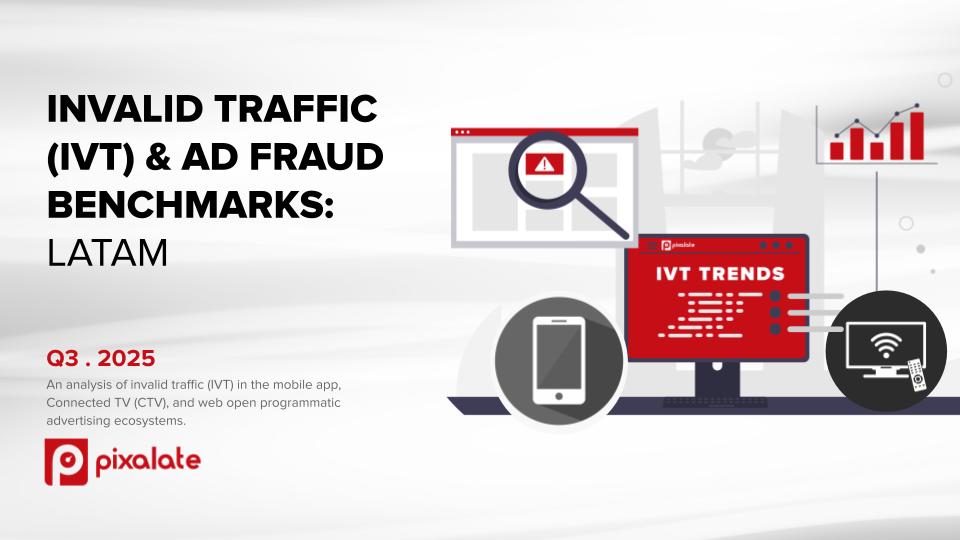The number of Connected TV (CTV) and over-the-top (OTT) apps that support programmatic advertising skyrocketed over the last 18 months, according to Pixalate's State of Connected TV/OTT: 2019 Ad Supply Trends Report.
The report details the global growth of OTT/CTV apps that support programmatic advertising.
232% global growth in OTT/CTV apps that support programmatic

According to Pixalate's data, between Q3 2018 and Q4 2019, and 18-month phase, the number of OTT/CTV apps that support programmatic video advertising increased 3.3x — or 232%.
This growth in supply helped fuel the fact that the number of programatic OTT/CTV ad transactions increased 330% in 2019 alone.
Here are the 2019 quarter-over-quarter growth rates in terms of global number of OTT/CTV apps that support programmatic video:
- Q1 to Q2: 20% growth
- Q2 to Q3: 38% growth
- Q3 to Q4: 32% growth
State of Connected TV/OTT: 2019 Ad Supply Trends Report
Download a free copy of Pixalate's State of Connected TV/OTT: 2019 Ad Supply Trends Report to learn more.

What's in Pixalate's 2019 OTT/CTV programmatic advertising supply trends report:
Some data points that can be found in the report include:
- OTT/CTV programmatic advertising benchmarks
- Global OTT/CTV programmatic ad growth rates
- Breakdown of OTT/CTV device popularity
- OTT/CTV app growth
- Top supply-side platforms (SSPs) for programmatic in OTT/CTV
Disclaimer
The content of this post, and the State of Connected TV/OTT: 2019 Ad Supply Trends Report, reflect Pixalate’s opinions with respect to the factors that Pixalate believes can be useful to the digital media industry. Any proprietary data shared is grounded in Pixalate’s proprietary technology and analytics, which Pixalate is continuously evaluating and updating. Any references to outside sources should not be construed as endorsements. Pixalate’s opinions are just that, opinions, which means that they are neither facts nor guarantees.








